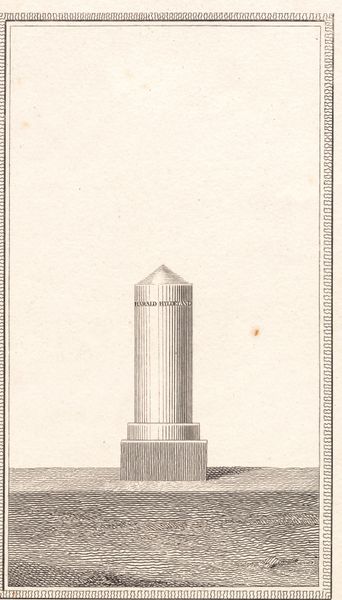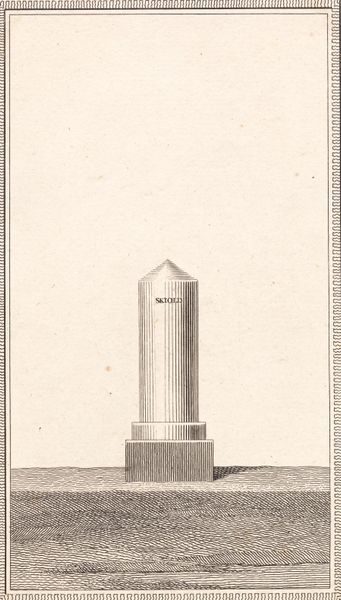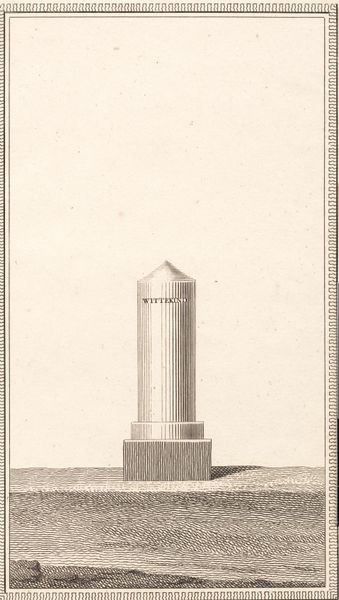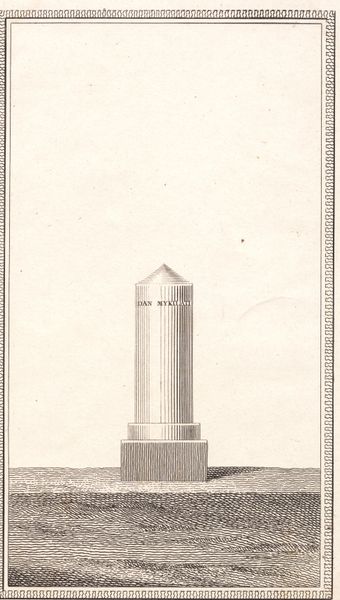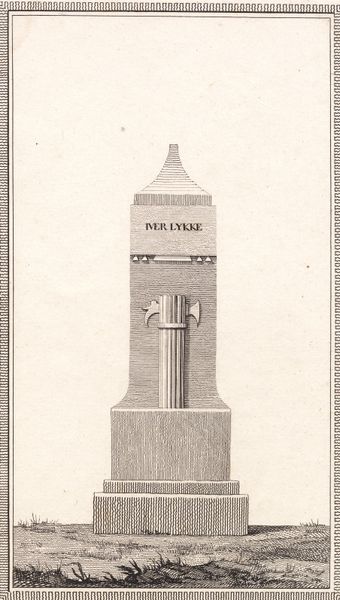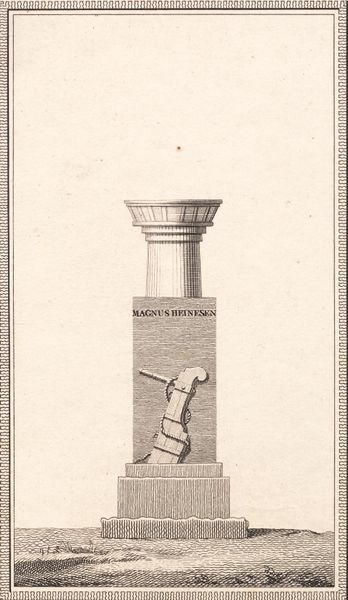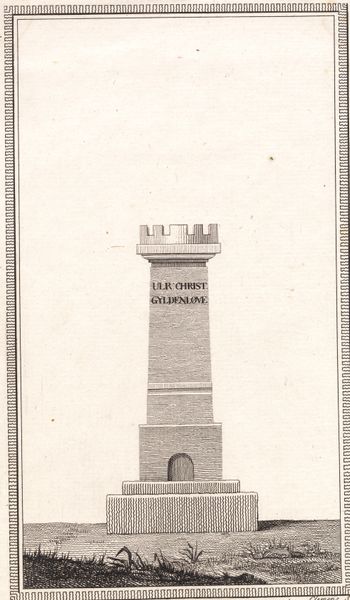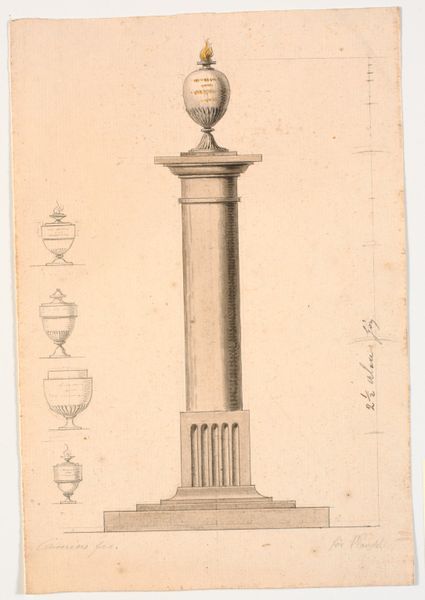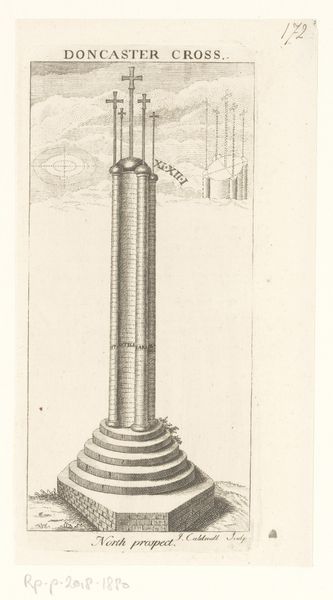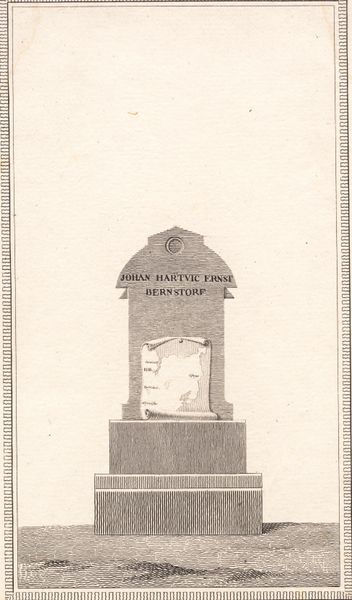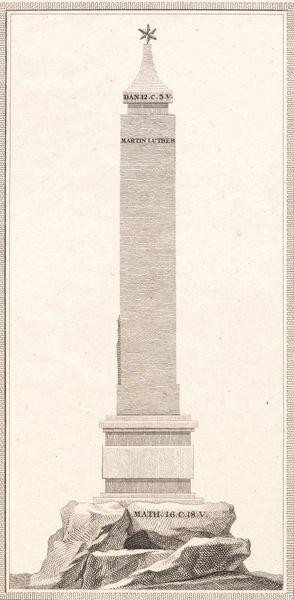
print, etching
#
neoclacissism
# print
#
etching
#
landscape
#
classical-realism
#
geometric
#
line
#
academic-art
Dimensions: 179 mm (height) x 103 mm (width) (billedmaal)
Curator: This is "Gorm den Gamle," an etching from between 1779 and 1781, created by J.F. Clemens, residing here at the SMK. It depicts a solitary, column-like monument. Editor: It feels so austere, doesn't it? Almost like a diagram. A perfectly rendered geometric form standing starkly in what I assume is meant to be a landscape, yet it's more conceptual than real. Very rigid. Curator: Exactly! The coolness is intentional. This exemplifies neoclassical art's revival of classical forms and themes, favoring order and reason. Clemens reduces the subject, a monument, to its purest essence. Editor: A monument to what, exactly? Is it supposed to conjure specific memories? My take on monuments in general—and here, perhaps, this applies more distinctly—is that they attempt to fix time, yet the history and ideology they seek to represent are constantly shifting and often riddled with omissions. Curator: In this instance, the etching depicts an early Danish king, Gorm the Old. Monuments of rulers have always served as reminders of power. And I think the landscape style, paired with this academic-art approach, elevates this notion. Notice how line work and precise detailing replace any sense of emotive expression, stripping the depiction down to an idea rather than an attempt to convey the spirit of the individual it honors. Editor: The crispness lends a sense of authority, yet paradoxically renders the historical figure almost mythical. Do you think the severe lack of ornamentation speaks to an interpretation of democracy and restraint? Are we meant to consider him a king, a civil servant, or even a pharaoh? Curator: It prompts speculation, that’s certain! There are faint markings denoting text near the monument's top, but its precision only exacerbates the mystery—an object intended to convey history becoming opaque with age and intention. I'm stuck thinking about how this rendering seems less a commemoration than a commentary on the passage of time itself. Editor: The image serves as a potent reminder that any artifact—artwork, text, or monument—inevitably interacts with changing interpretations. To think Clemens probably never fathomed our exchange centuries later! That gives this quiet etching a new, unexpected life.
Comments
No comments
Be the first to comment and join the conversation on the ultimate creative platform.
